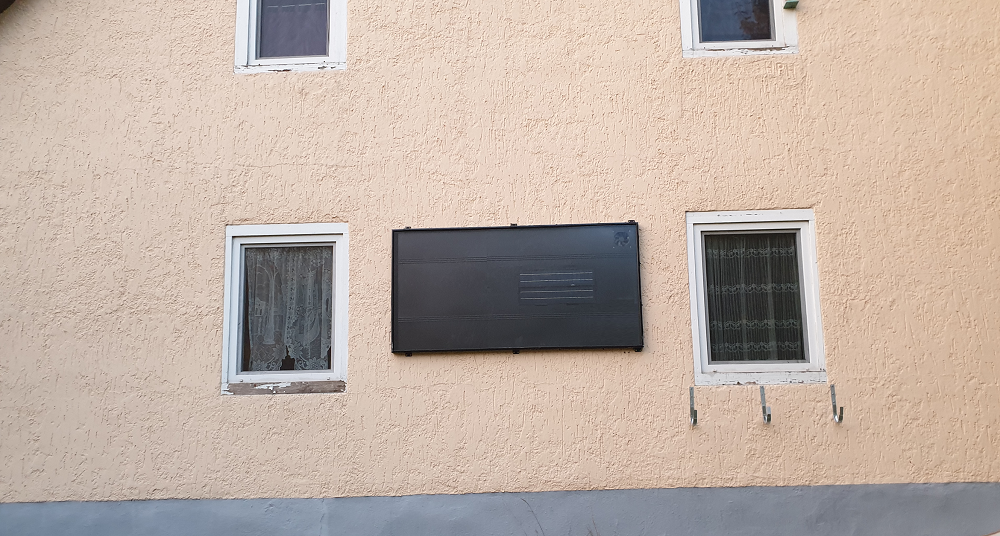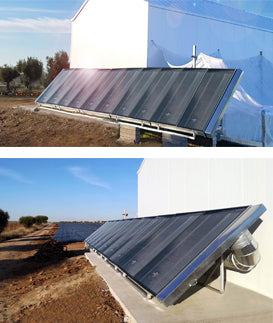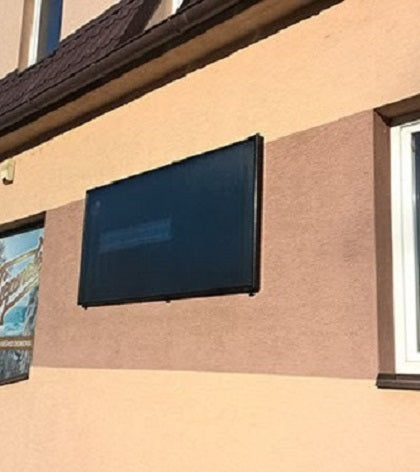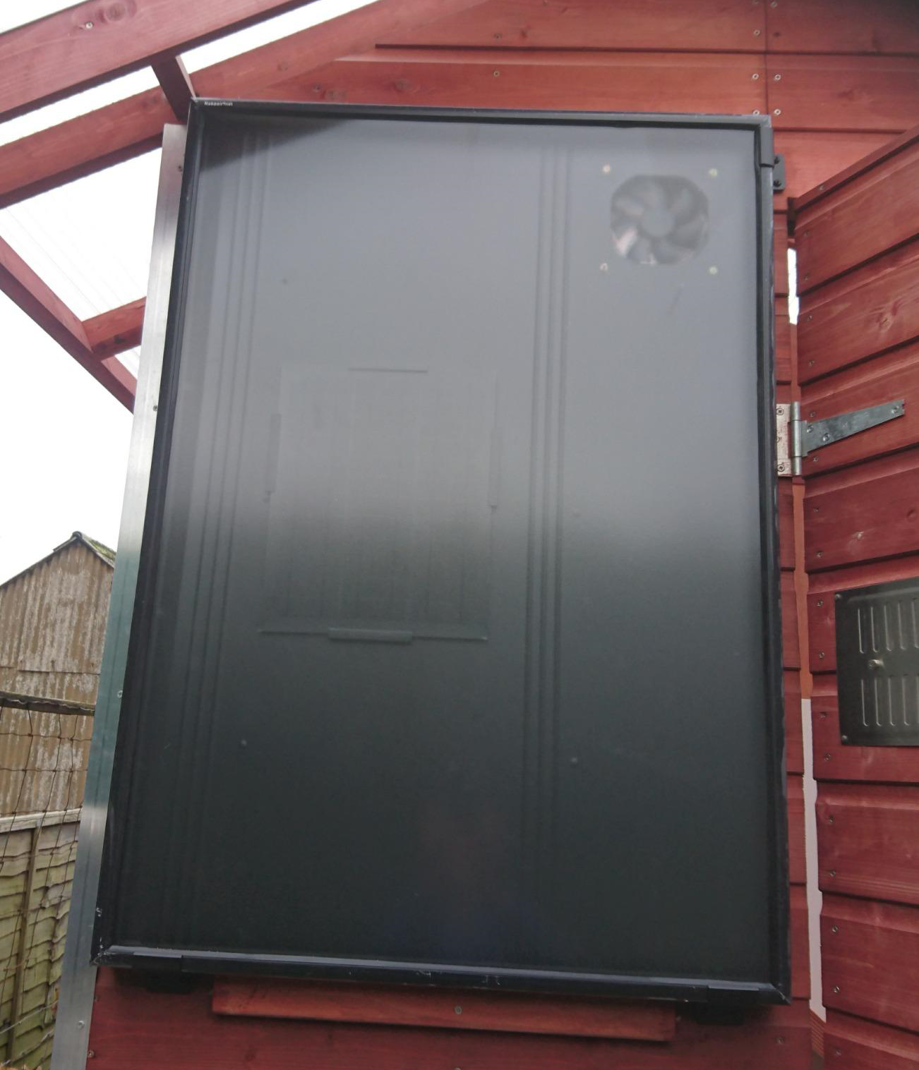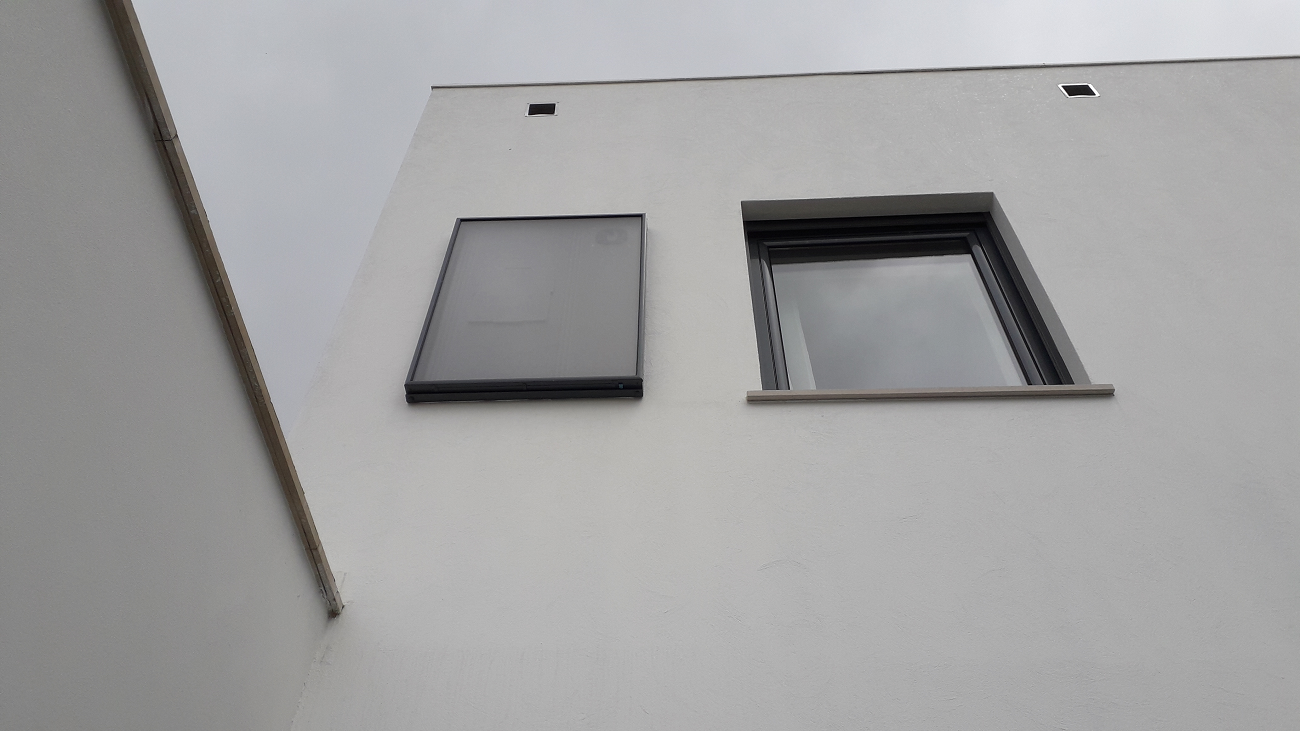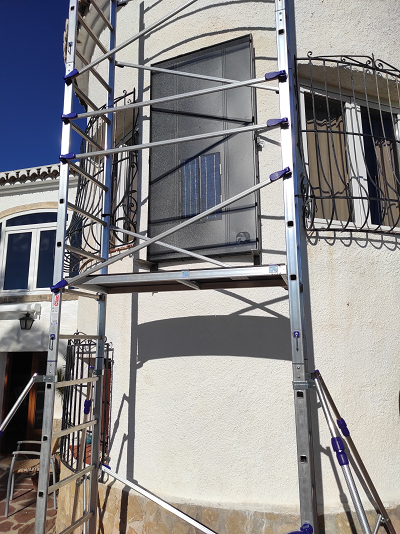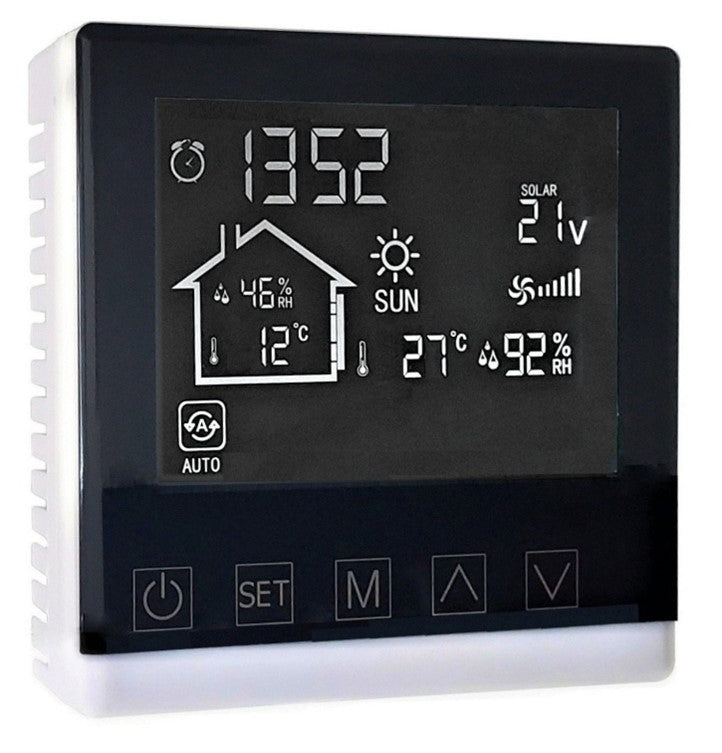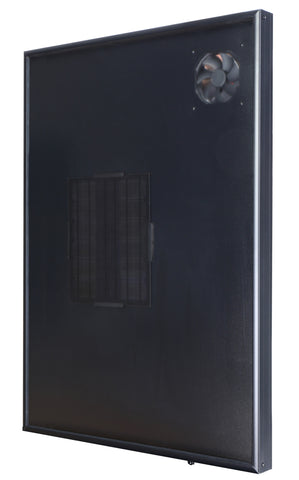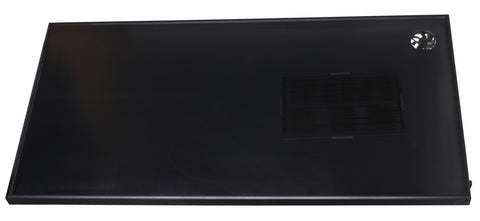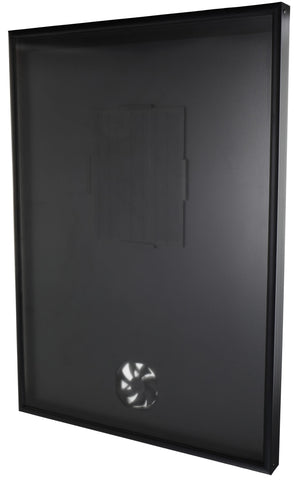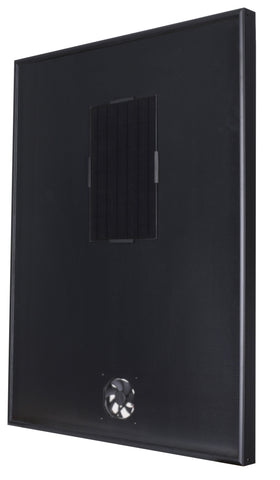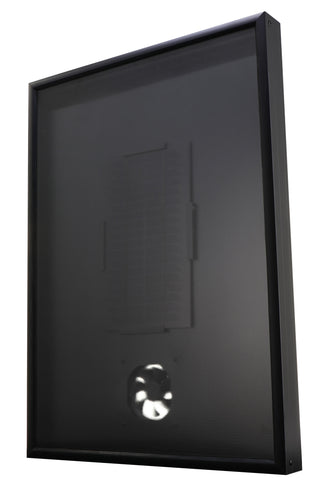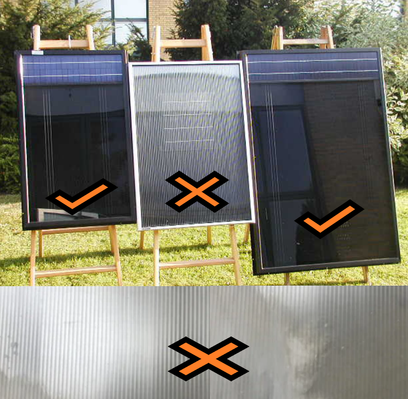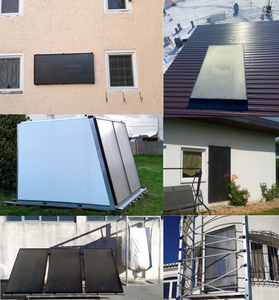2-in-1 function
-
Air collector OS32 Solar air heater, air ventilator with LCD thermostat: heating air Conditioner Conditioning Exhaust Fan Ventilator Thermal Panel Dehumidifier Heat Pump Ventilation Dehumidification water Attic roof vent gable
€490.00 €599.00Product details: OS32 solar air heater 2-in-1 Function: 1.Heating outdoor fresh air, applicable in Spring, Autumn and Winter; 2. Heating indoo...
-
Air collector OS22 Solar air heater, air ventilator with LCD thermostat: heating air Conditioner Conditioning Exhaust Fan Ventilator Thermal Panel Dehumidifier Heat Pump Ventilation Dehumidification water Attic roof vent gable
€350.00 €399.00Product details: OS22 solar air heater 2-in-1 Function: 1. Heating outdoor fresh air, applicable in Spring, Autumn and Winter; 2. Heating indo...
-
Air collector OS42 Solar air heater, air ventilator with LCD thermostat:heating air Conditioner Conditioning Exhaust Fan Ventilator Thermal Panel Dehumidifier Heat Pump Ventilation Dehumidification water Attic roof vent gable
€699.00 €899.00Product details: OS42 solar air heater 2-in-1 Function: 1.Heating outdoor fresh air, applicable in Spring, Autumn and Winter; 2. Heating indo...
Standard function
-
Air collector OS20 Solar air Heater heating air Conditioner Conditioning Exhaust Fan Ventilator Thermal Panel Dehumidifier Heat Pump Ventilation Dehumidificatio
€299.00 €320.00Nakoair Solar air heater No cost for heating Ventilation Dehumidification Humidification Healthy indoor climate. Avoid moisture, mold, fungus...
-
Air collector OS30 Solar air heater, air ventilator with mechanical thermostat:Solar air Heater heating air Conditioner Conditioning Exhaust Fan Ventilator Thermal Panel Dehumidifier Heat Pump Ventilation Dehumidification water Attic roof vent gable
€420.00 €499.00Product details: OS30 solar air heater Standard Function: Heating outdoor fresh air, applicable in Spring, Autumn and Winter Model No. O...
-
Air collector OS20LCD Solar air Heater heating air Conditioner Conditioning Exhaust Fan Ventilator Thermal Panel Dehumidifier Heat Pump Ventilation Dehumidification
€330.00 €370.00Product details: OS20 solar air heater Heating outdoor fresh air, applicable in Spring, Autumn and Winter. Nakoair Solar air heater No co...
-
Air collector OS30LCD Solar air Heater heating air Conditioner Conditioning Exhaust Fan Ventilator Thermal Panel Dehumidifier Heat Pump Ventilation Dehumidificatio
€460.00 €550.00Product details: OS30LCD solar air heater Heating outdoor fresh air, applicable in Spring, Autumn and Winter. Nakoair Solar air heater No ...
-
Air collector OS10 Solar air heater, air ventilator with mechanical thermostat
€210.00Nakoair Solar air heater No cost for heating Ventilation Dehumidification Humidification A healthy indoor climate. Avoid moisture, mold, fung...
Healthy Environment

Allergies are the fastest growing chronic diseases in many countries such as UK, Australia. etc.
Low Indoor Air Quality Causes Health Problems
Allergies are the fastest growing chronic diseases in Australia. Improve your indoor air quality to prevent asthma, dust mites, allergies, mould, termites, dry rot and seasonal illnesses. Nakoair® works to create a high Indoor Air Quality. The inbuilt air filter removes pollutants and humidity while providing fresh natural air flow into the area. ‘The life you lead is the air you breathe’.
What Is Indoor Air Quality & What does it mean for my Health?
Indoor Air Quality is the measure of the health and comfort levels of the air within a building. Buildings with a low Indoor Air Quality are usually uncomfortably humid and contain many air pollutants. According to the World Health Organisation, household air pollution is one of the world’s greatest environmental health risks. So, it is extremely important to understand and control Indoor Air Quality to reduce the risk of health concerns.
How Do I Know If I Have Low Indoor Air Quality?
Due to the health risks associated with Low Indoor Air Quality, it is important to notice indications in your workplace or home. There are a number of signs to alert you that you have a low indoor air quality, including:
Humidity Issues
We build and insulate our houses to keep the heater or air conditioner effects, inside the building and forget that we thereby reduce air flow and increase the air humidity. Low indoor humidity levels can cause static electricity, dried out indoor plants and peeling wallpaper. High humidity means excess moisture in the air. This can cause mould to grow as well as encourage dust mites and other allergens to thrive. Timber furniture and building structures can also be affected by this moisture. This can result in dry rot, termite infestation and wet subfloors which also affect our air quality and our personal moods. In Australia, we allow high humidity to enter our homes when windows are left open for cross ventilation, all day or at night
Dust Buildup
Excessive dust can attract dust mites, a common cause of allergies. Large amounts of dust shouldn’t have the opportunity to accumulate on surfaces or continually travel in the air.
Mould
Mould gives off spores which float in the air and can make conditions such as asthma worse. Mould is one indicator of dampness which can be caused by humidity.
Stale Odours
If you’ve ever smelled perfume in the air hours after you sprayed it on or cooking odours from dinner earlier in the week, your home suffers from stale odours. Whether these odours drive you up the wall or don’t bother you at all, they’re symptoms of a larger problem that you can’t cover up with air freshener. Unpleasant smells that don’t seem to go away signal that your home doesn’t have adequate ventilation. Buildings left unused for part of the year, such as holiday homes, are particularly exposed to the problem of damaging high moisture content in the air. The indoor climate suffers from the closed windows and locked doors. Typical signs are stale air, musty smells and lumps in the sugar bowl.
Condensation on windows
Commonly in modern building structures, we find tightly sealed windows and doors, plus walls and ceilings sealed by vapour barriers. Here in Australia high humidity days are frequent. Traditional ventilating methods coupled with high humidity will raise moisture content in your walls and furniture. Moisture or condensation on the inside of your single or double glazing has become a sign of an unsound indoor climate.
Room-to-Room Temperature Variation
If you’ve ever noticed that some rooms in your home stay warm while others cool down easily, the cool air from your air conditioner may not be reaching each room equally.
Respiratory Conditions
Bad indoor air can lead to a whole host of respiratory conditions, including chronic coughing, sneezing, fatigue, headaches, and congestion. If left untreated, some of these issues can develop into nosebleeds, breathing difficulties, asthma attacks, and even lung disease. When you notice signs of chronic respiratory, it’s important to question the quality of the IAQ right away.
Irritated Eyes
Eyes, nose and throat irritation, headaches, dizziness, and fatigue can often be a sign of low Indoor Air Quality. Itchy eyes, dry skin, infections and colds can signify low air humidity. These effects can be present almost immediately after exposure to the airborne pollutant or poor humidity levels.
Triggered Asthma & Allergies
Allergic reactions to unhealthy living conditions caused by mould, dust mites, pollen, second-hand smoke, pet fur and dry rot in our houses are numerous and increasing. These can trigger asthma and allergies. Allergies are the fastest growing chronic diseases in Australia with 4.1 million Australians having at least 1 allergic disease. Common allergic diseases include asthma and allergic rhinitis (hay fever).
How to improve Indoor Air Quality?
Ventilation is key. However, resist opening the window. Why? In the middle of Winter, it is unlikely that you are going to open up the house to ventilate and let all the freezing cold outdoor air in. You will also be letting in the outdoor pollutants, especially if you live in a highly polluted city area such as Sydney. Instead, consider installing a ventilation system such as Nakoair® to push old air out and bring new air in through a filtration system, with the added bonus of free solar heating for Winter so you benefit the environment and your comfort by avoiding unnecessary loss of heat accompanied by carbon reduction and energy saving.
Nakoair® also has the benefit of moving unwanted heat and humidity out of air circulation in Summer months. Since Nakoair® is free to run, these heating and cooling functionalities are going to save you loads on your electricity bills as you throw away your electric heaters and use your air con less!
The costs of a Nakoair® is far less than the costs for a mechanical ventilation system using heat recycling. The choice of material and simple construction makes Nakoair® extremely reliable and durable. It will perform for many years without any maintenance.
A Nakoair® solar air heater mounted on the wall or the roof is a simple, low-cost and effective solution to provide natural, emission-free filtered air into the area and ensure a high Indoor Air Quality along with occupant health and comfort. No matter whether your goal is to solve or improve health-related problems or you just want to avoid experiencing daily discomfort in general.
A HEALTHY home, a COOL home in Summer, a WARM home in Winter, a DRY home all year round, a GREEN home and SAVINGS on your electricity bill. What more could you want from your Nakoair® Ventilation System!
Nakoair Solar air heater: No cost for heating, Ventilation, Dehumidification, Humidification, A healthy indoor climate. Avoid moisture, formaldehyde (HCHO), TVOC, benzene, ammonia, odor.
Heating:
On a sunny day, the temperature of the injected air is approximately 5-30ºC higher than the air inlet temperature. In addition, the air temperature on the sunny side usually rises more than 10 °C under the big sun.
Ventilation:
Depending on the model, approx. 5 to 140 m³ dry, warm air is blown into the room per hour. The room can also be slightly ventilated on a cloudy day without sunlight. The fresh air of solar air heater squeezes the turbid air out of the room, keeping the air fresh and oxygen-rich. Avoid moisture, mold, fungus, formaldehyde (HCHO), TVOC, benzene and odor. The room air can be exchanged within 2 hours.
Always supplying you a clean and healthy family:
Improve the indoor environment, reduce the irritation caused by allergy, especially for newborns. Improvement on the dwelling atmosphere---- bring in oxygen and reduce carbon dioxide; discharge unpleasant odors which might cause allergies and discomfort; control the temperature and moisture of the room, prevent the emergence and spread of bacteria. When dry and warm air keeps flowing in the room, the damp, rot or mold would be long-term reduced.
Dehumidification and Humidification: Optimum level (for comfort as well as building quality) is a relative humidity (RF) of 40-70%.
Absorb room moisture and drain out the room. Ventilation + Heating = Dehumidification. Make sure the value of your holiday home and wooden furniture. Especially suitable for wooden houses and basements. Nakoair solar air heater in basement, can sufficiently solve the moisture in basement, and prolong the life span of indoor structure and electrical appliance. The problem: Humid basements. One of the first signs of humidity in the basement is the stale smell. The humidity will soon destroy items stored in the basement, such as textiles, cardboard boxes or furniture. In addition, the lack of regular ventilation will result in mould and harmful fungus. To make the rooms fit for use again they have to be heated, mechanically dehumidified and vented on a regular basis. Below 15 ºC, electric dehumidifier will frost, and dehumidification effect will be much worse. Moreover, dehumidifier needs refrigeration and consumes a lot of electricity. This usually results in high operating costs.
The dry climate indoor can easily cause virus and bacteria to multiply and spread. In addition, the dry air takes away water from the body, making them feel dry, feverish, depressed, coughing, hoarse, and sore throat.
Reduce the amount of air pollution and greenhouse gases that result from the use of fossil fuels for heating.
Safety: low voltage, no fire, no household electricity, no smoke or dust.
Applications: Holiday homes; Residential and commercial buildings; Cabins and summer houses; Caravans and tents; Greenhouses and drying rooms; Cellars and storage rooms; Football and other sports rooms; Houses without electricity. Nakoair heater is started according to solar radiation.




